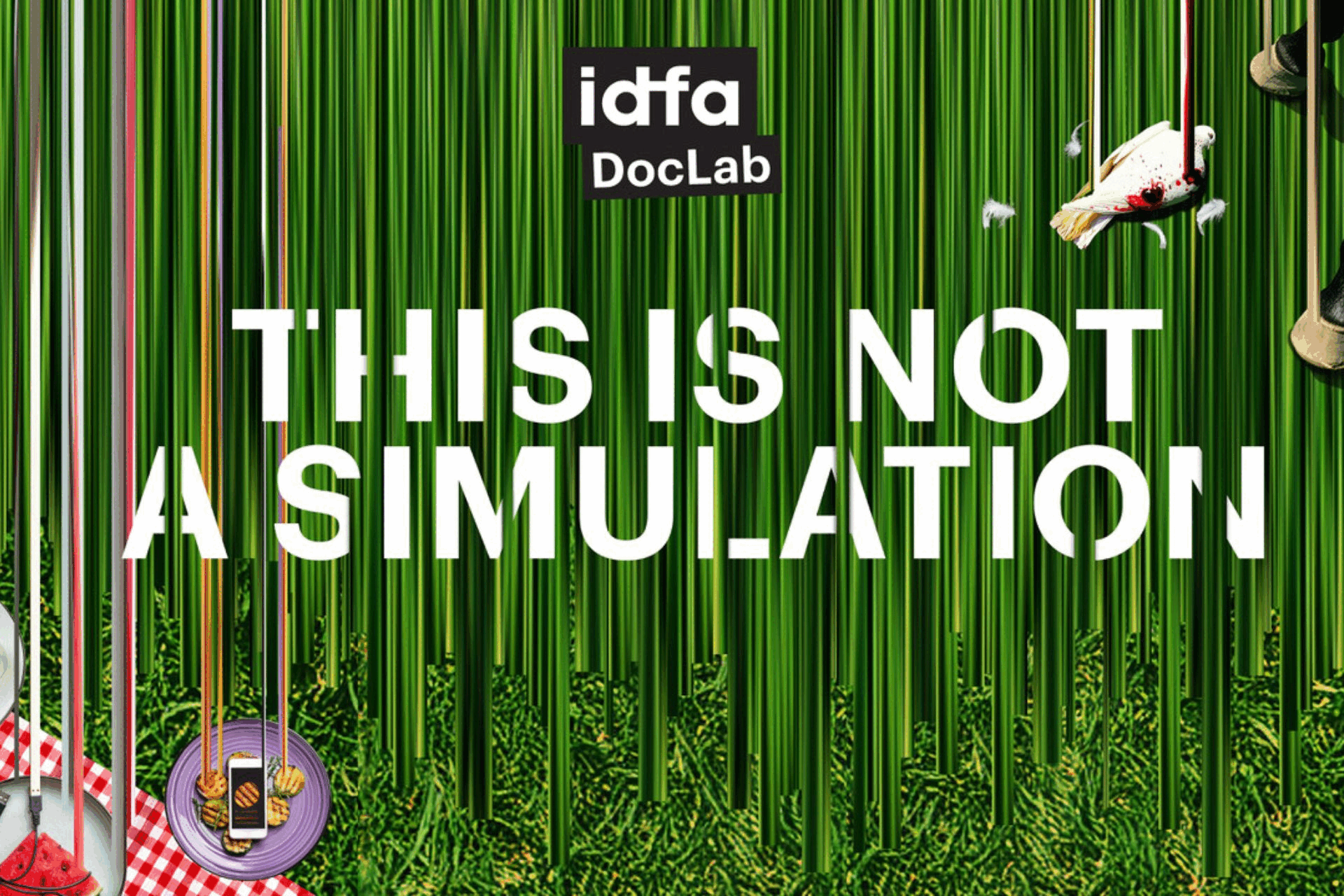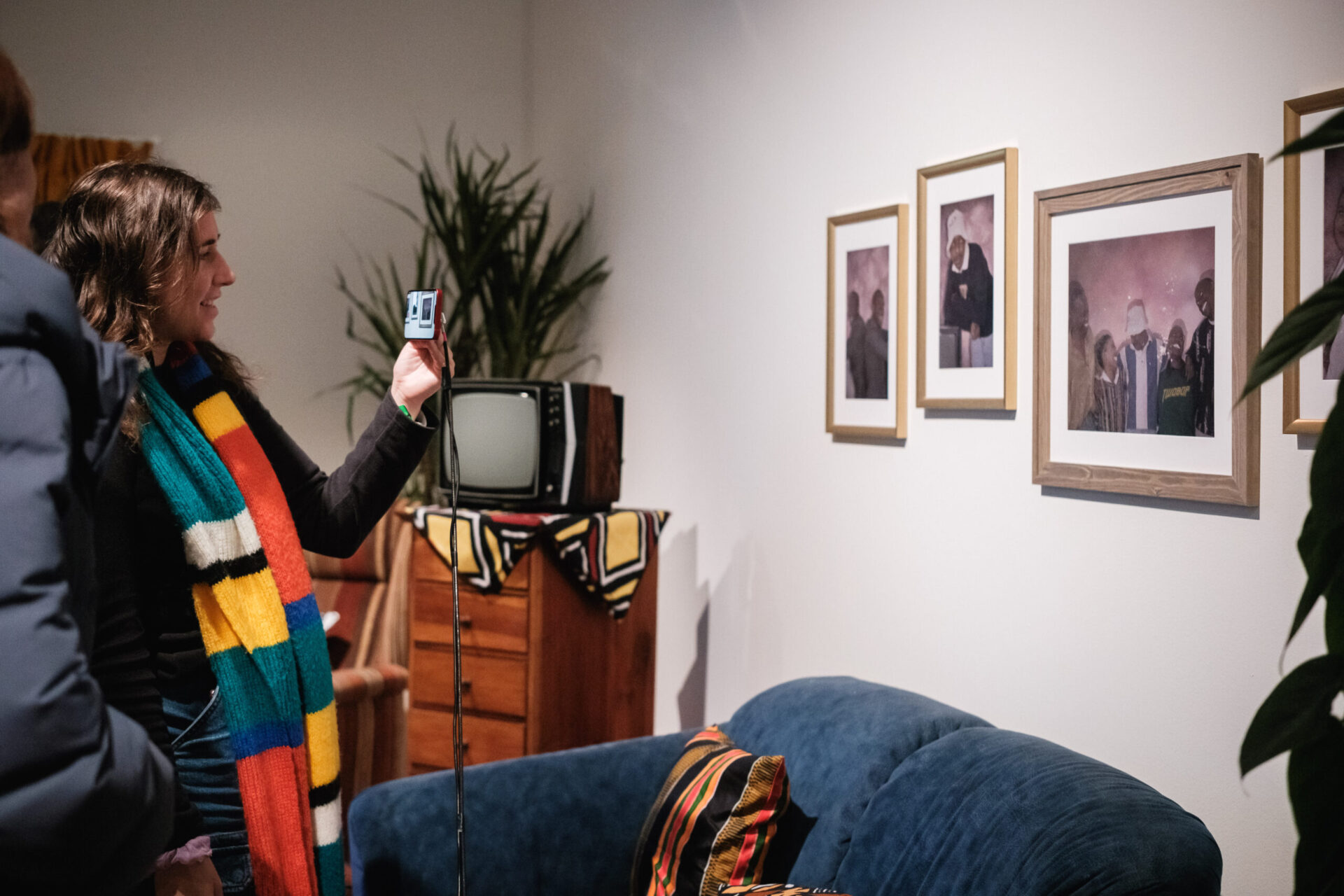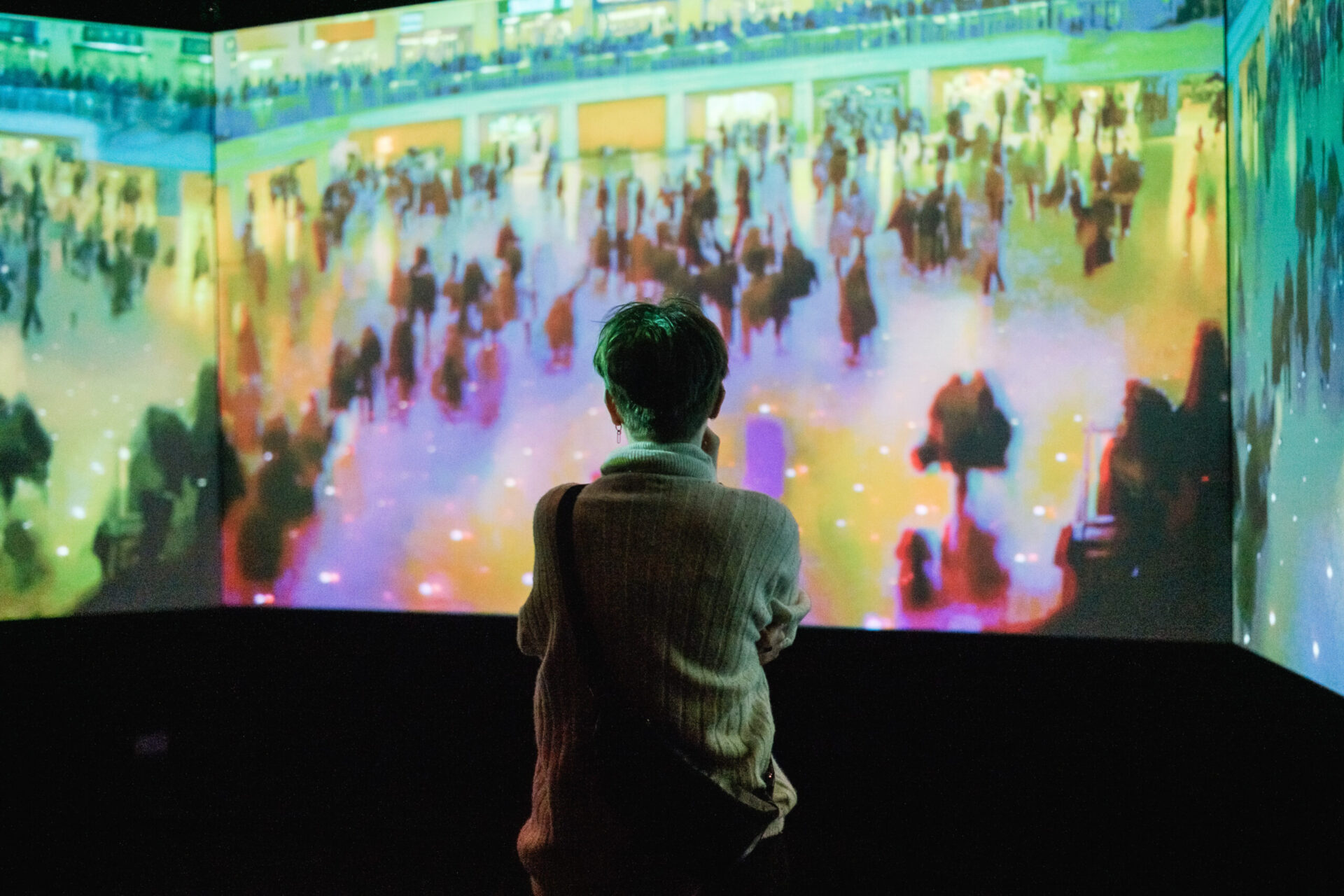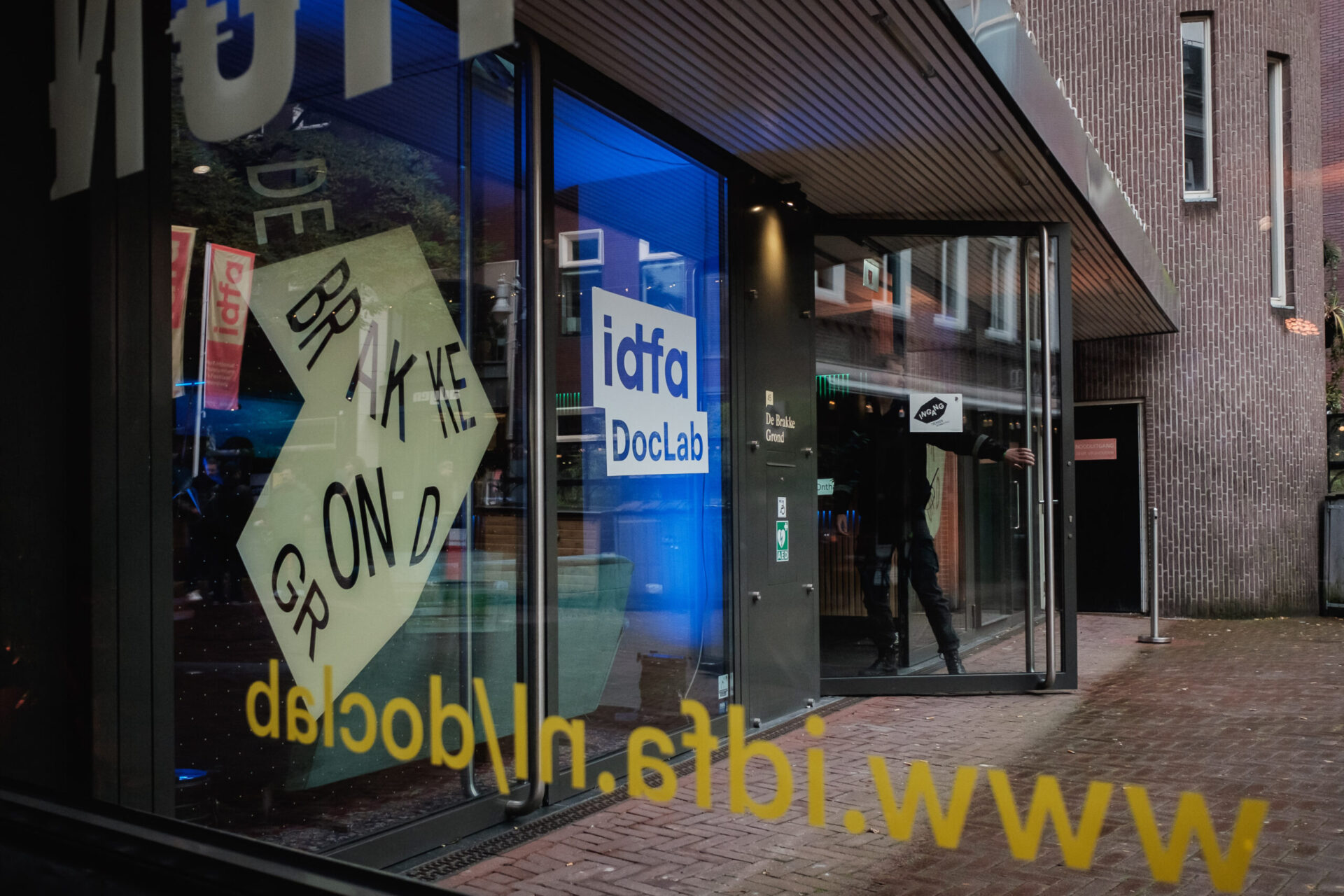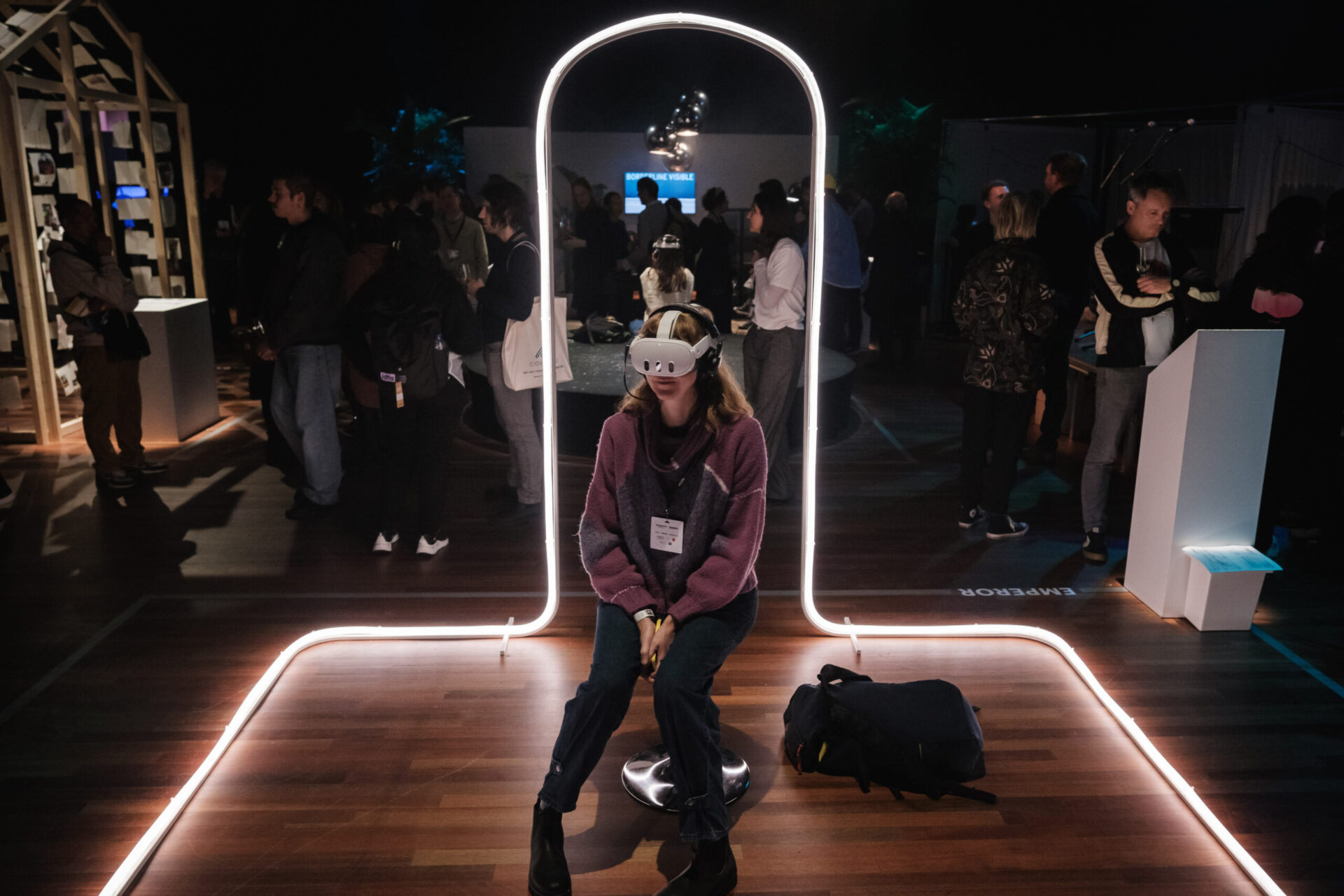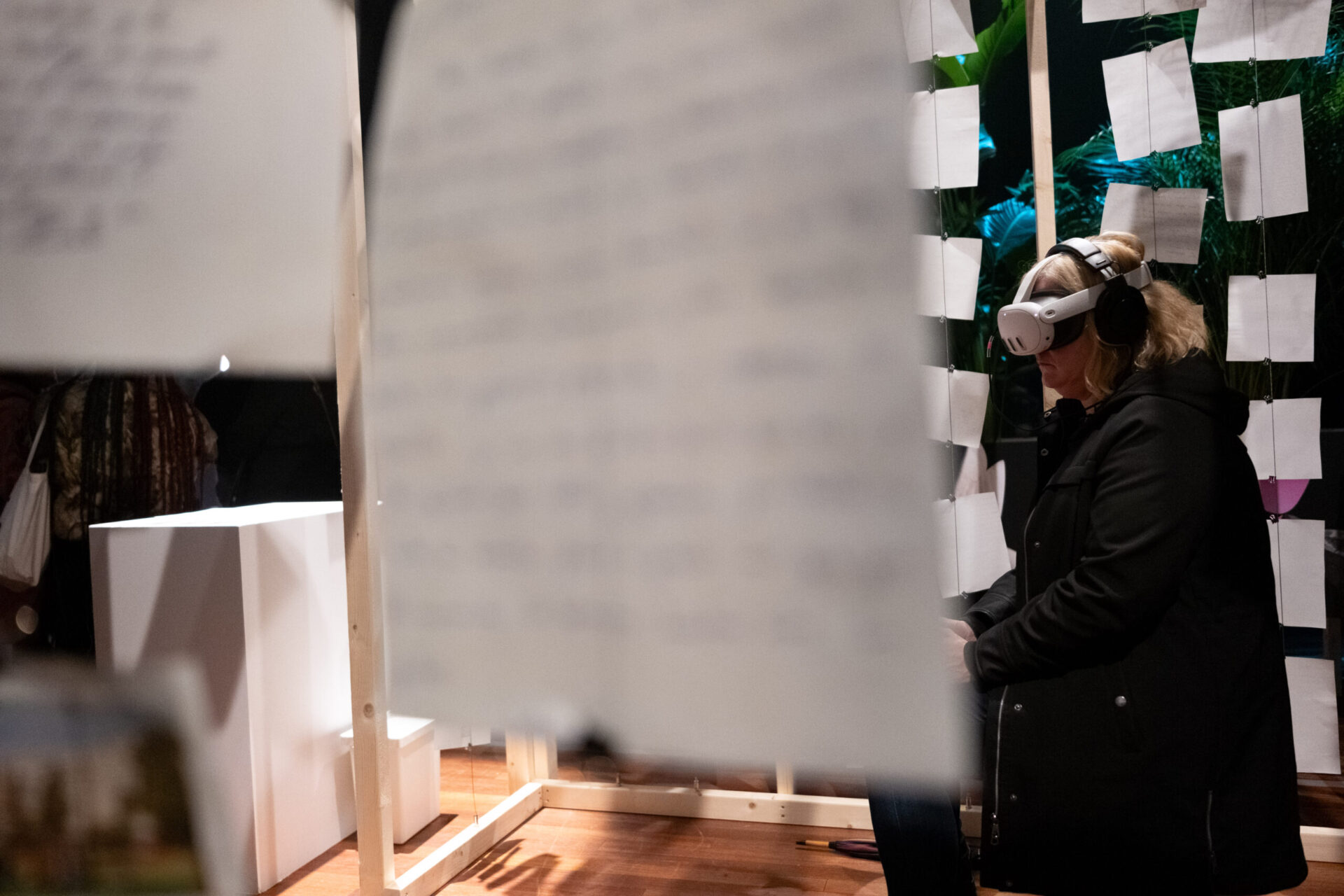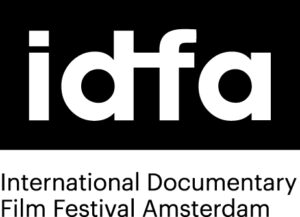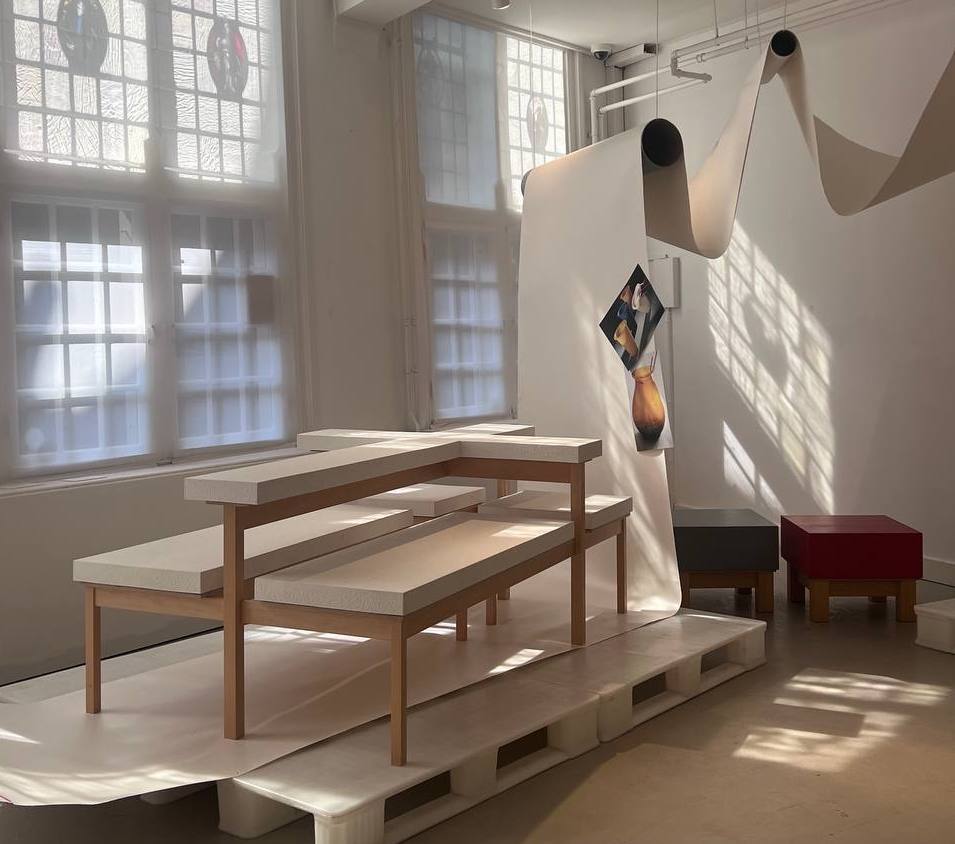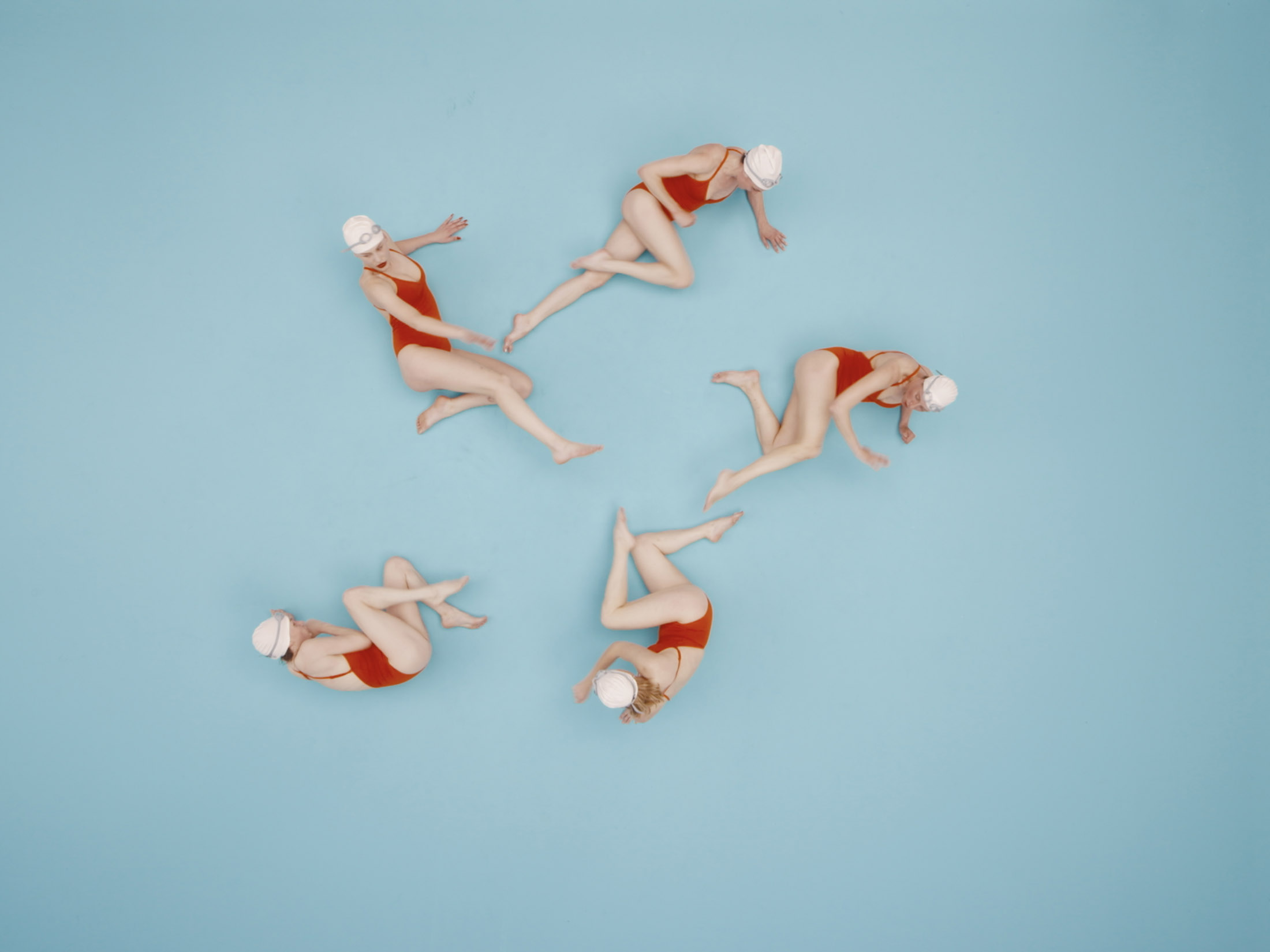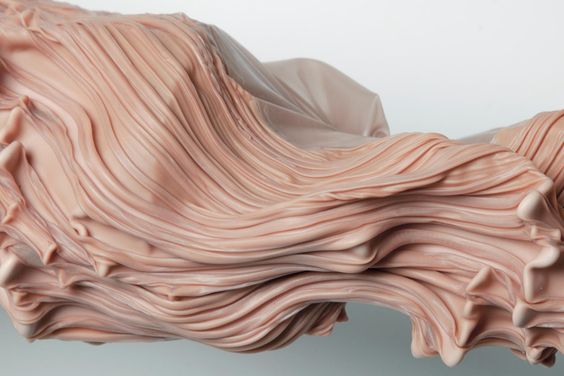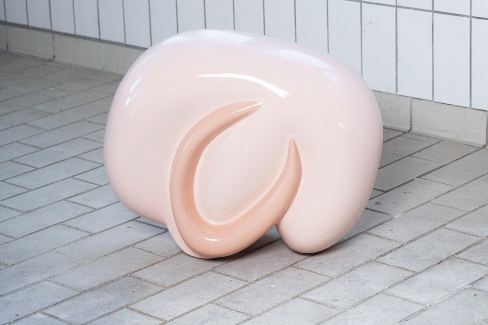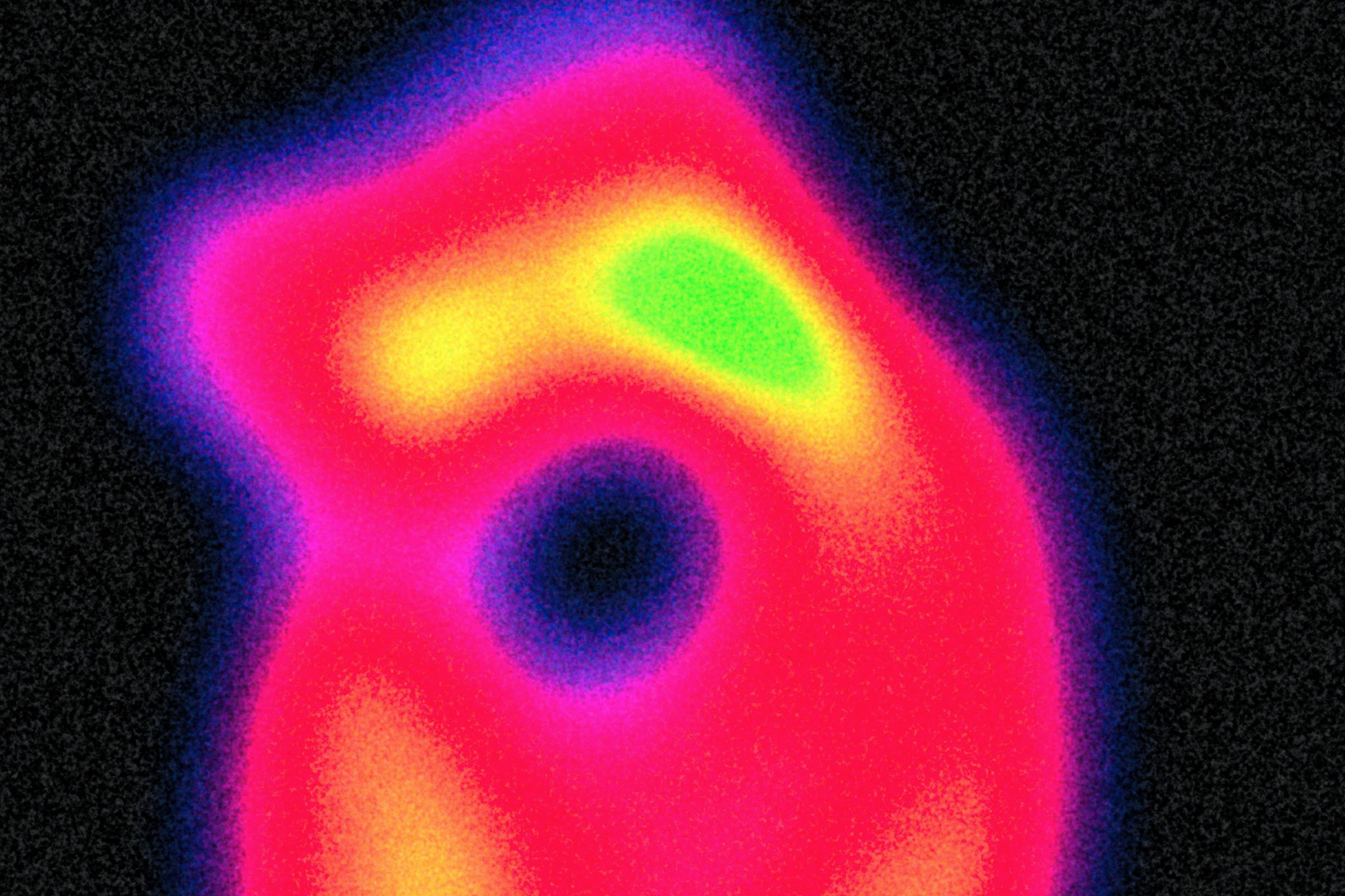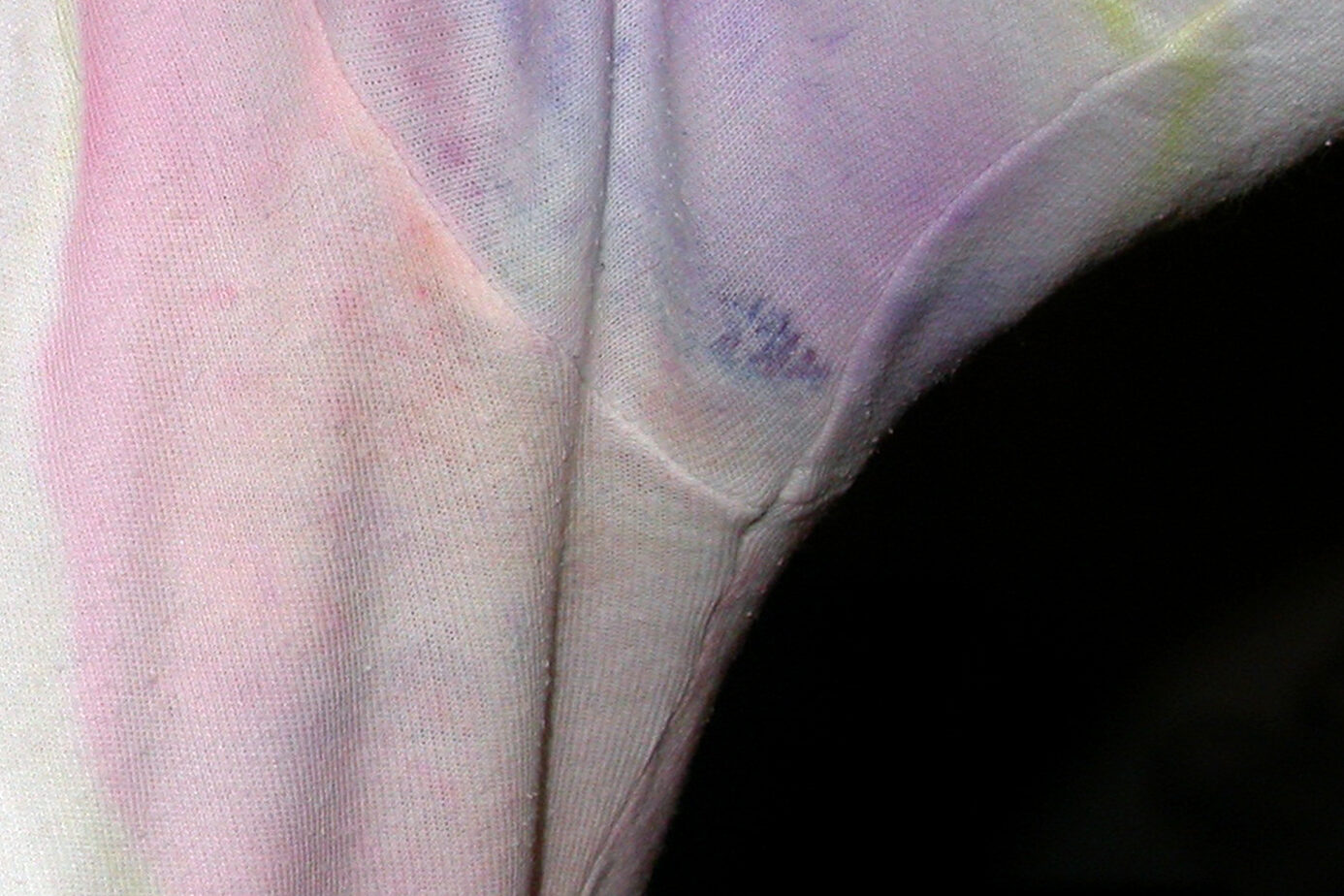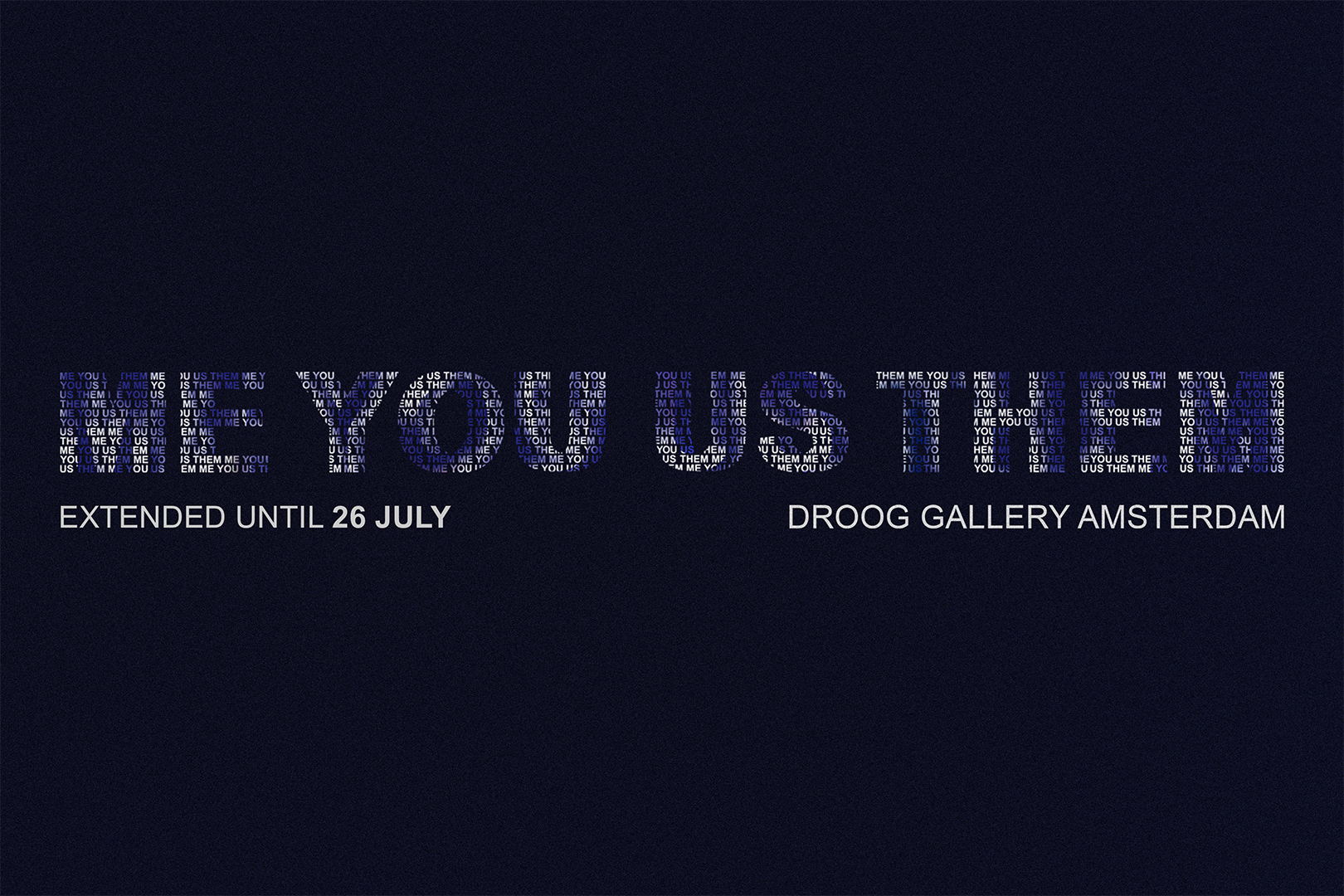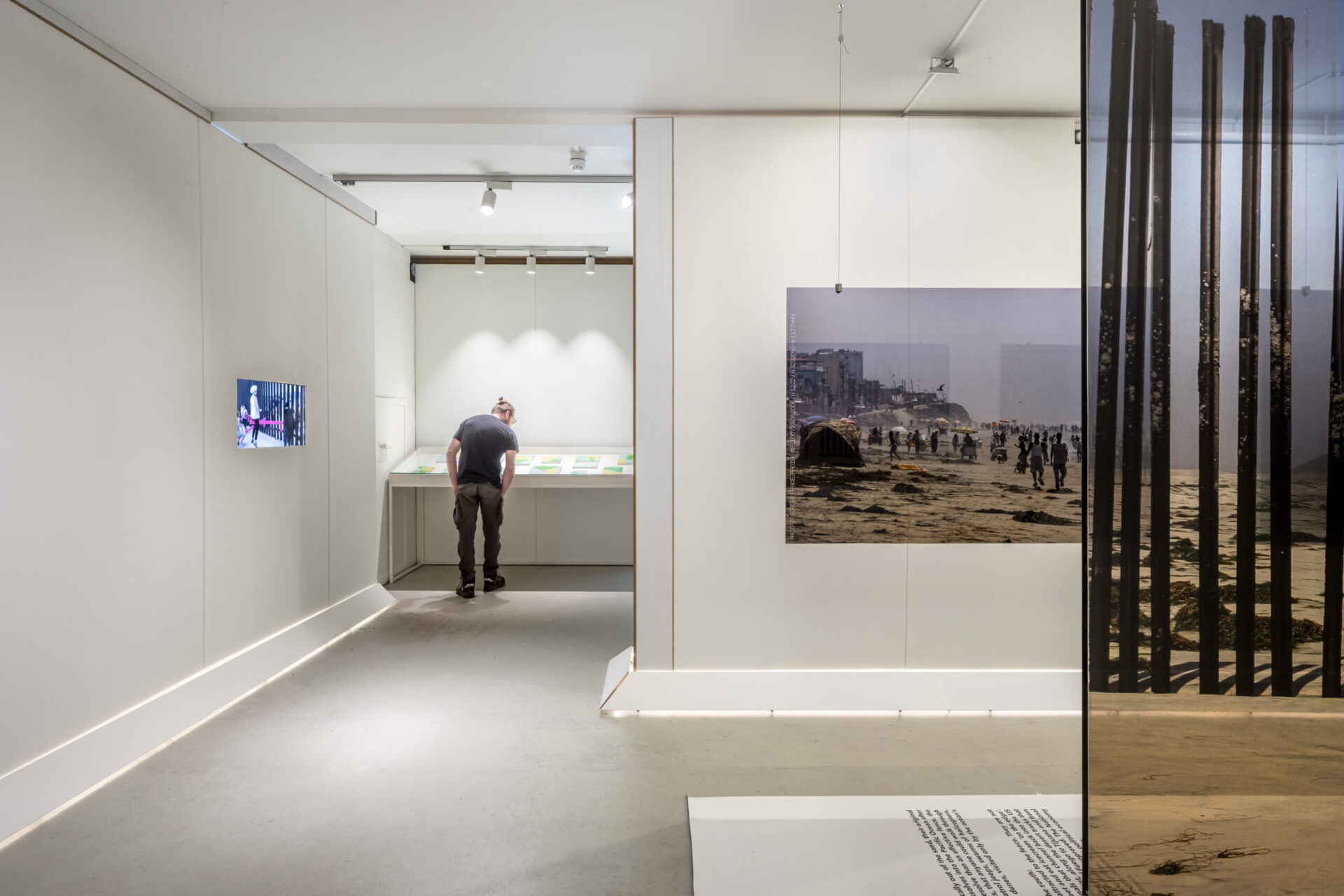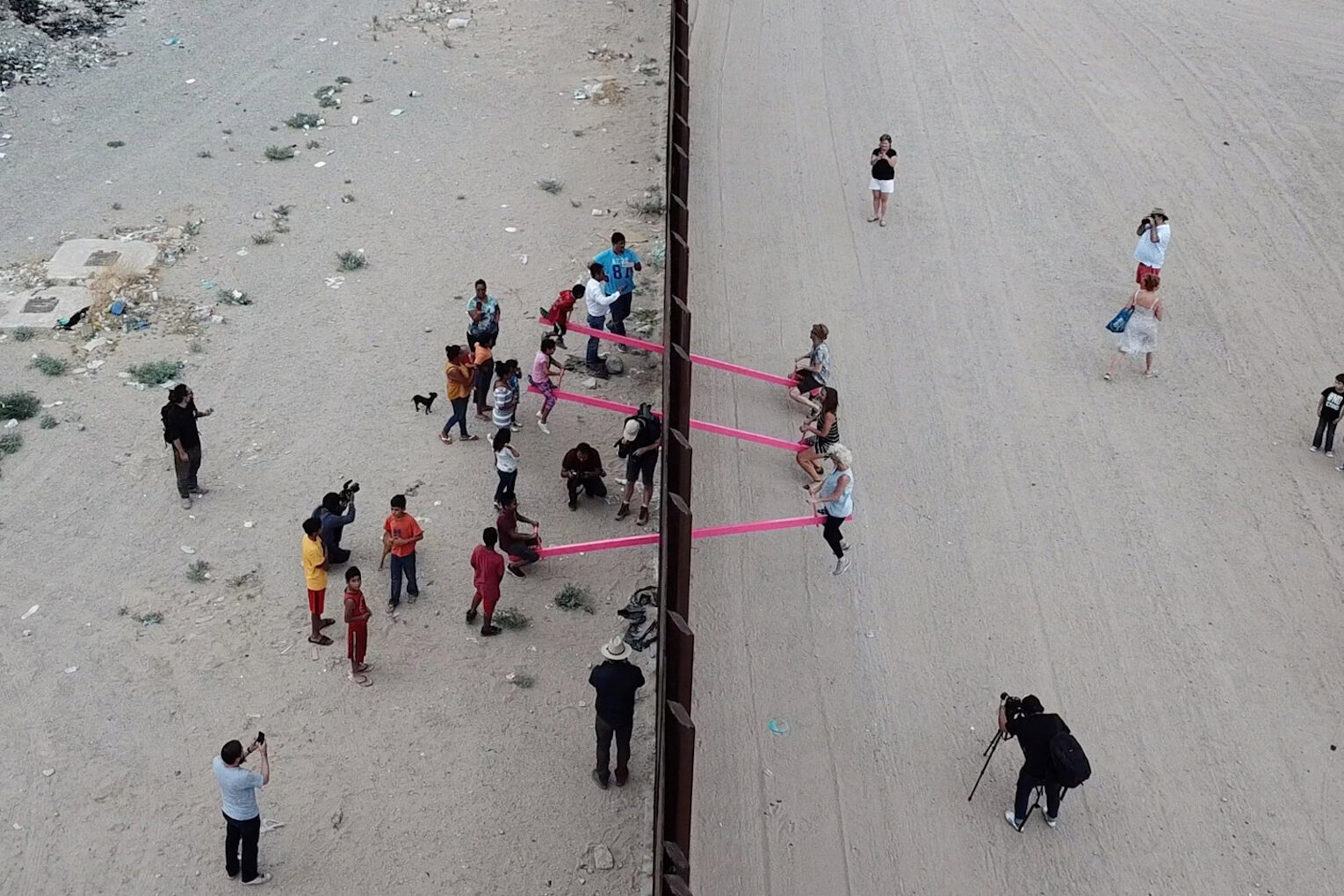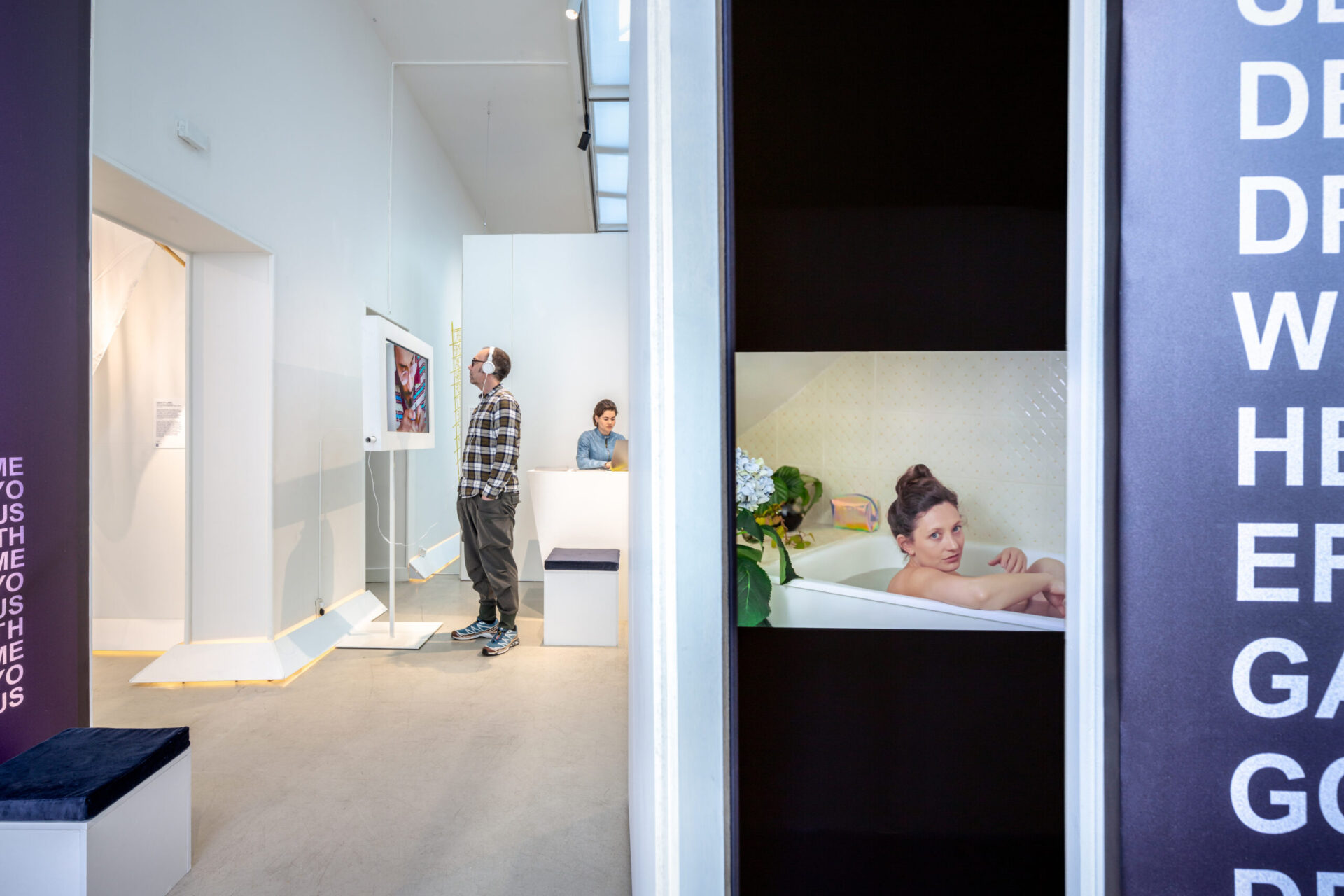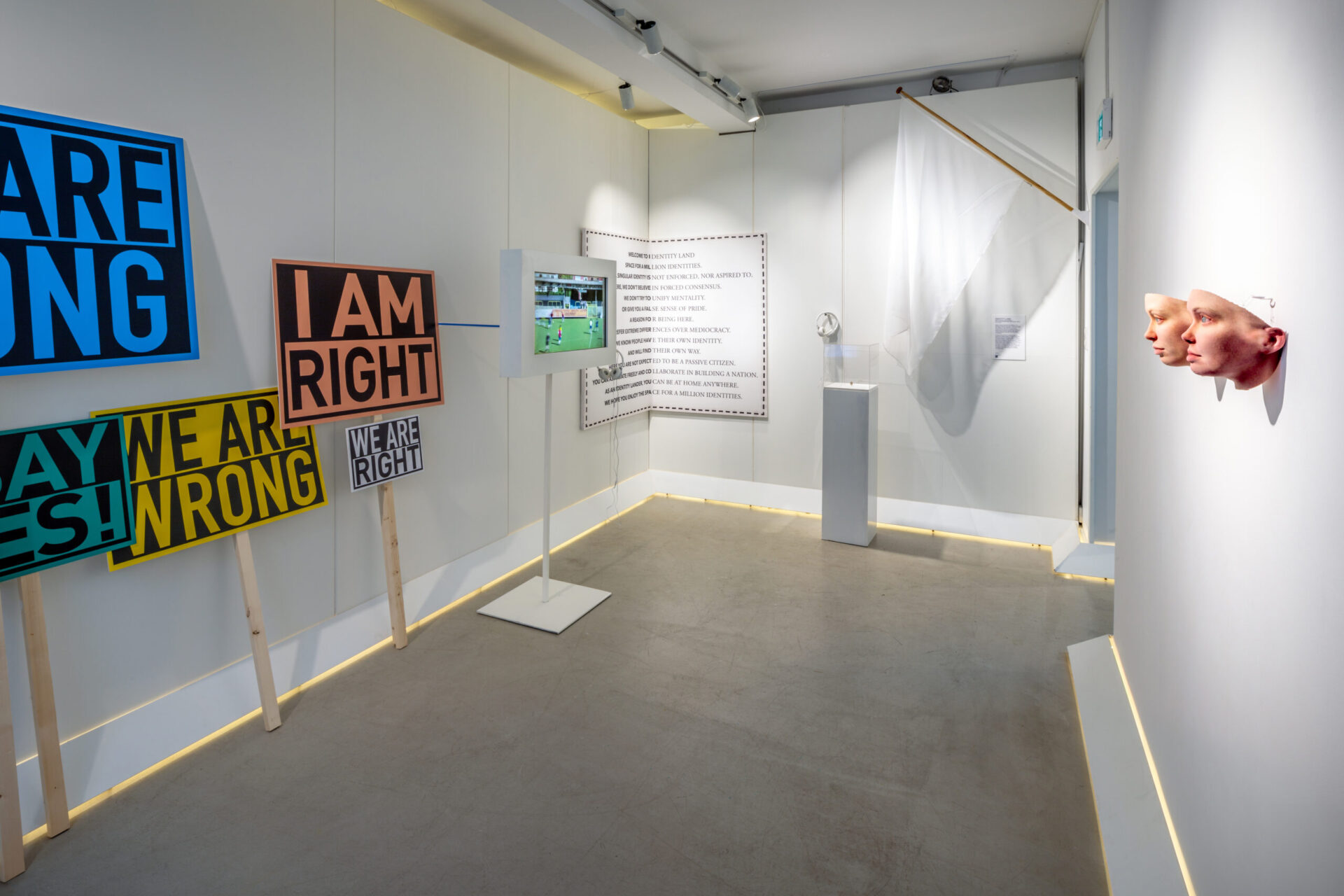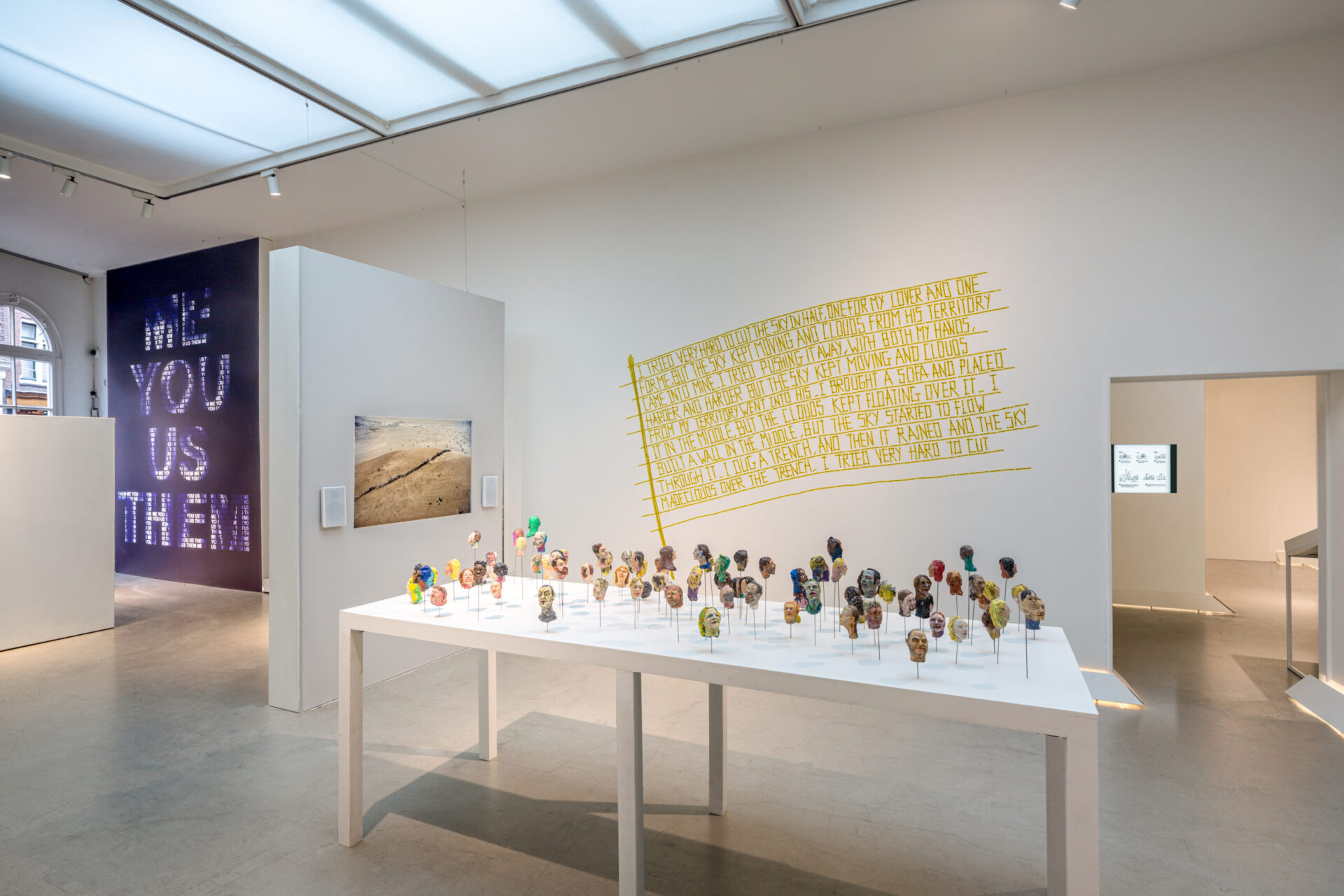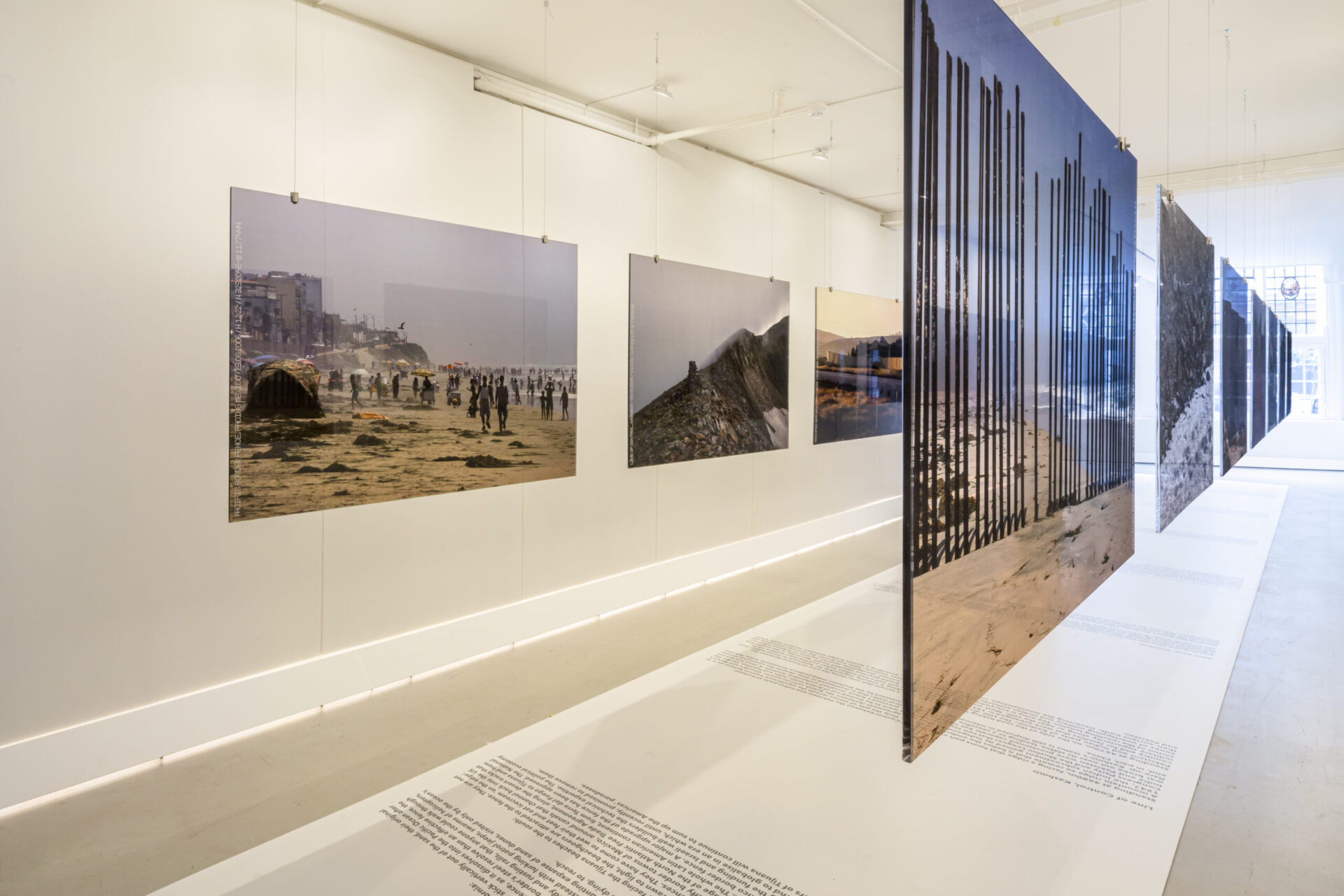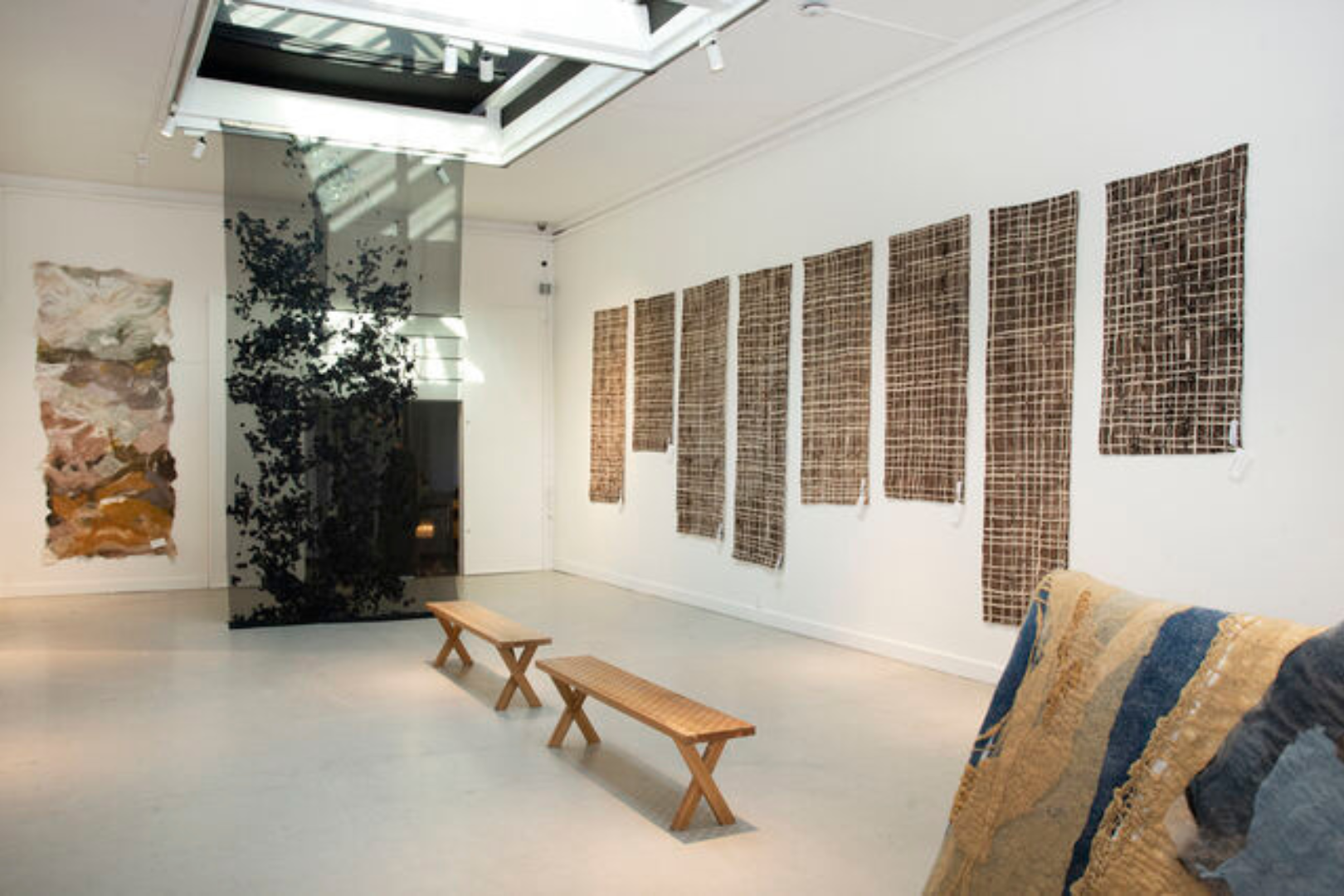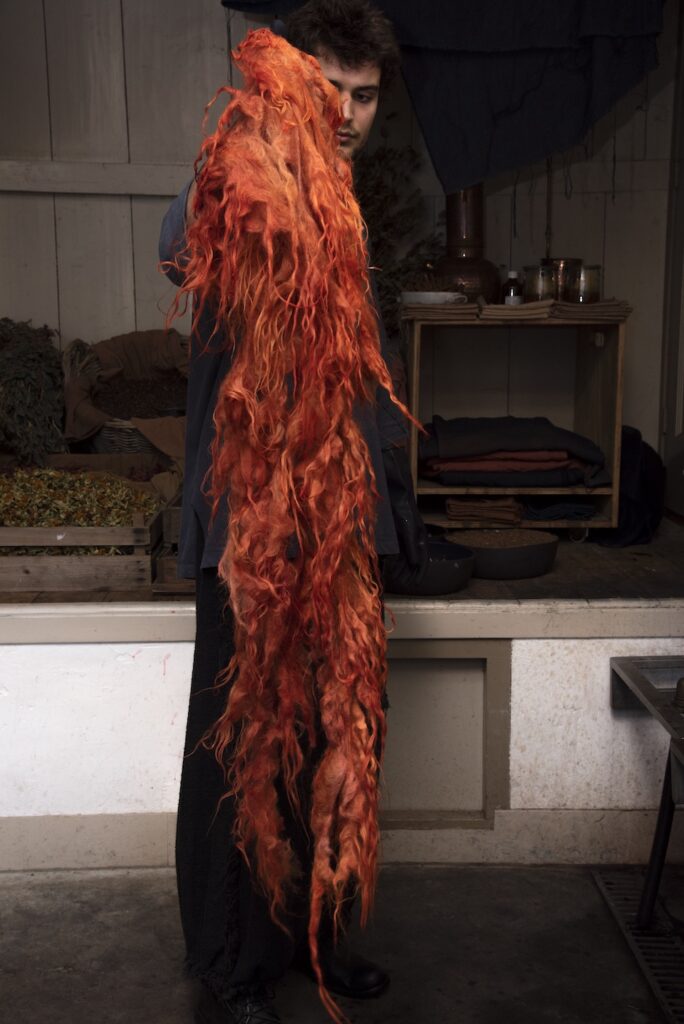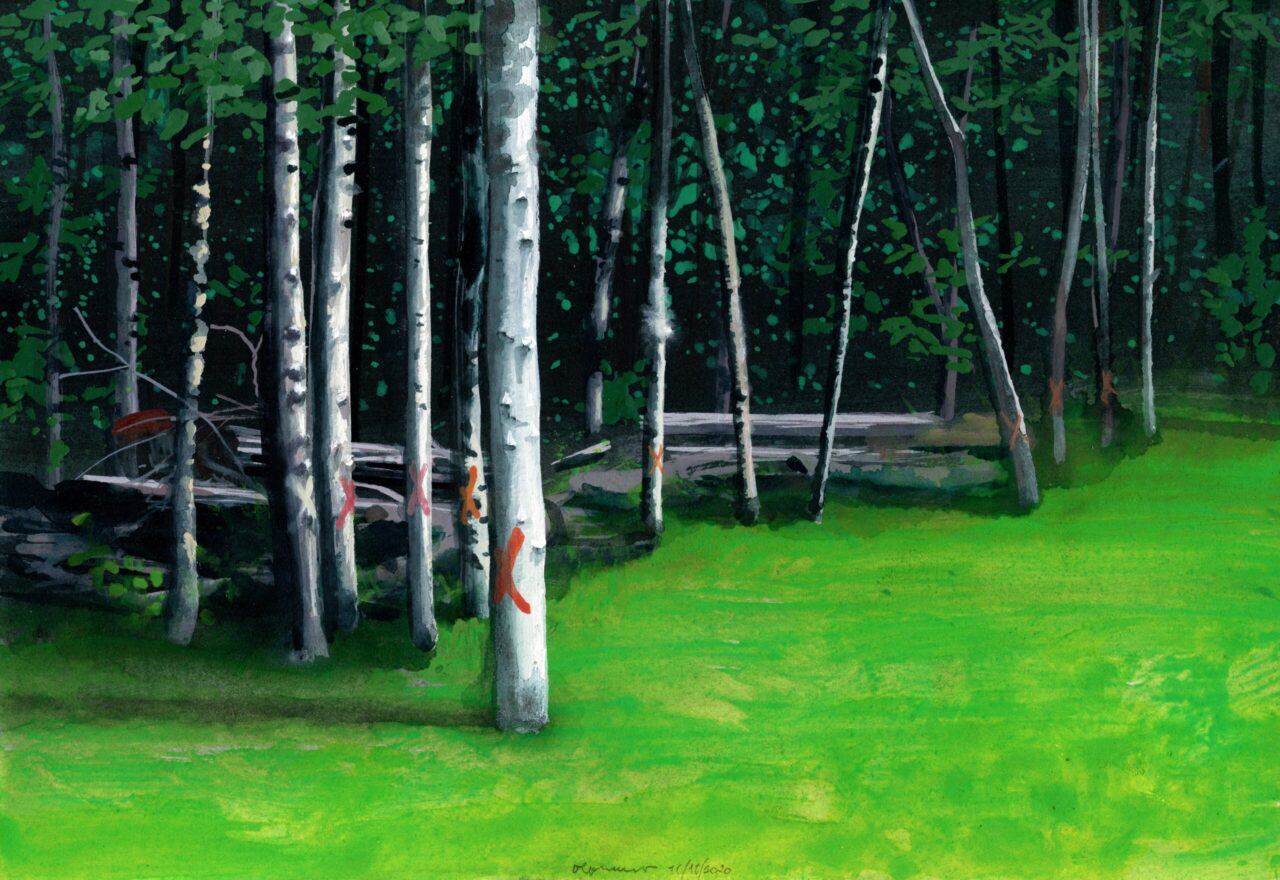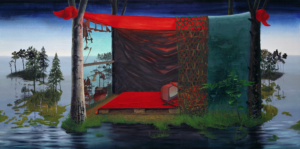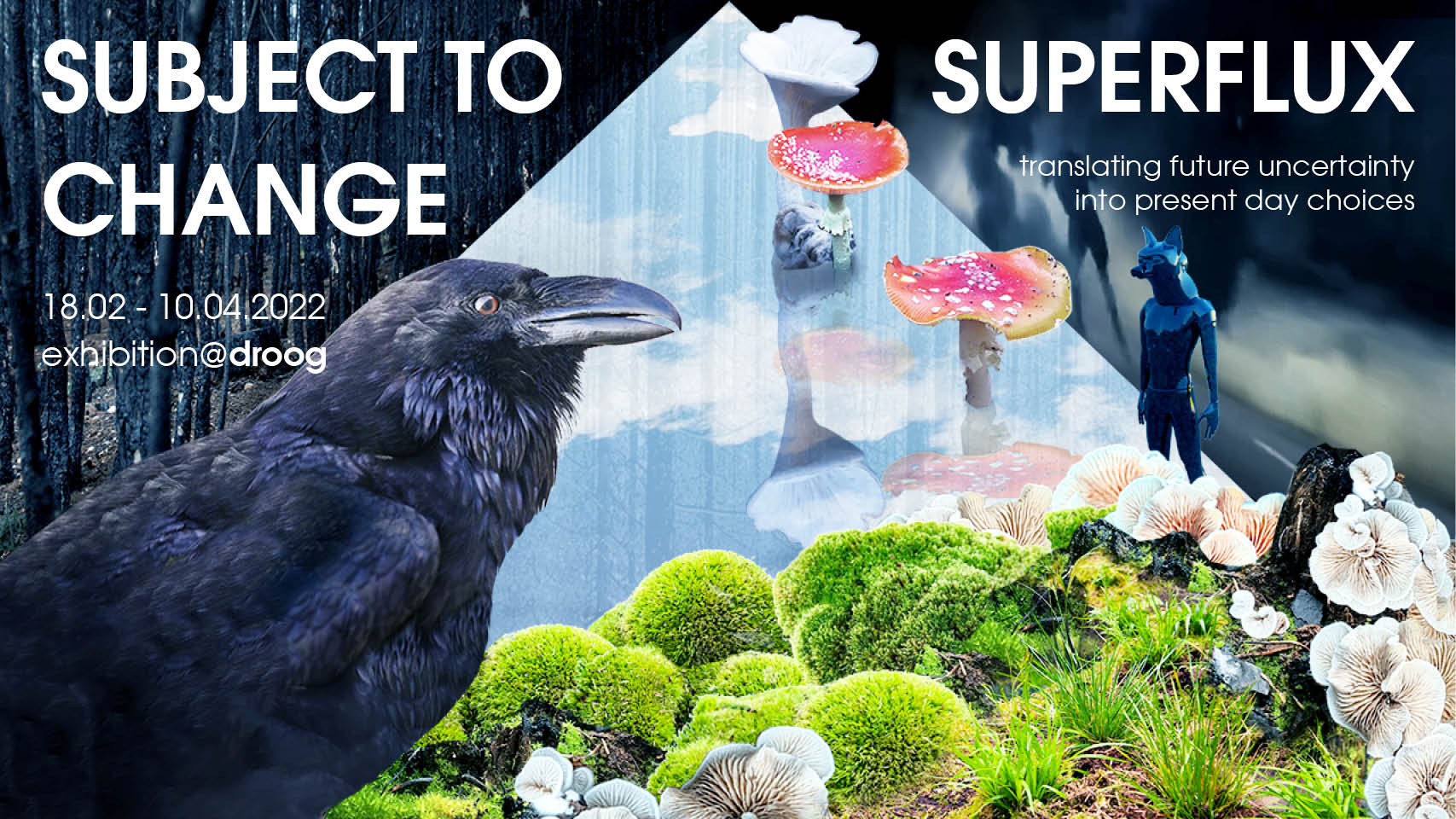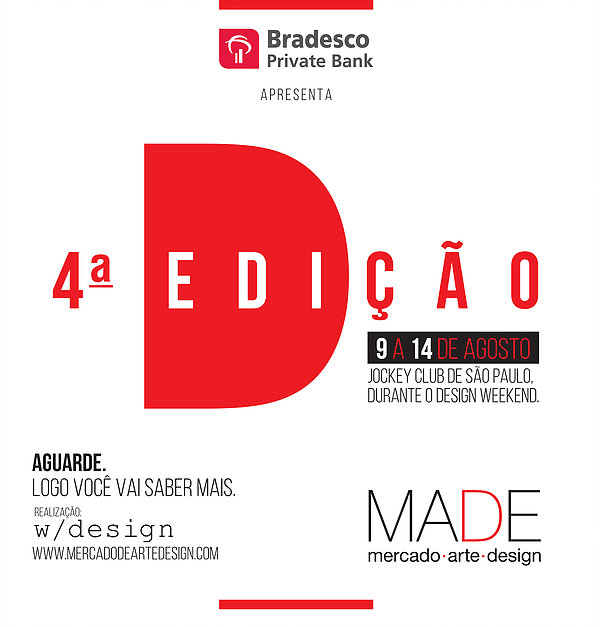IDFA DocLab: Exhibition
The range of different projects in this exhibition means you’re assured of finding new perspectives.
In Future Botanica, you can get your virtual hands dirty as a futuristic gardener: with an augmented reality app you design new plant species to shape your own vision of the future of nature and technology. Groundbreaking audio project Drift also gives an alternate glimpse of the future: this generative audio experience paints a picture of how the climate crisis and rising sea levels will present us with a sink-or-swim moment – or have we already reached that point? Sincerely, Victor Pike (also presented in a full-dome version at DocLab at the Planetarium) also uses AI-generated material. But, in this case, to reconstruct fragmented memories from the past. In contrast, there’s nothing artificial to be seen in Lisa Schamlé’s live performance Me, a Depiction. As a living component of her own installation, she explores our ideal of beauty and seeks confrontation with her own body—and with the spectators.
Composition
1. Drift
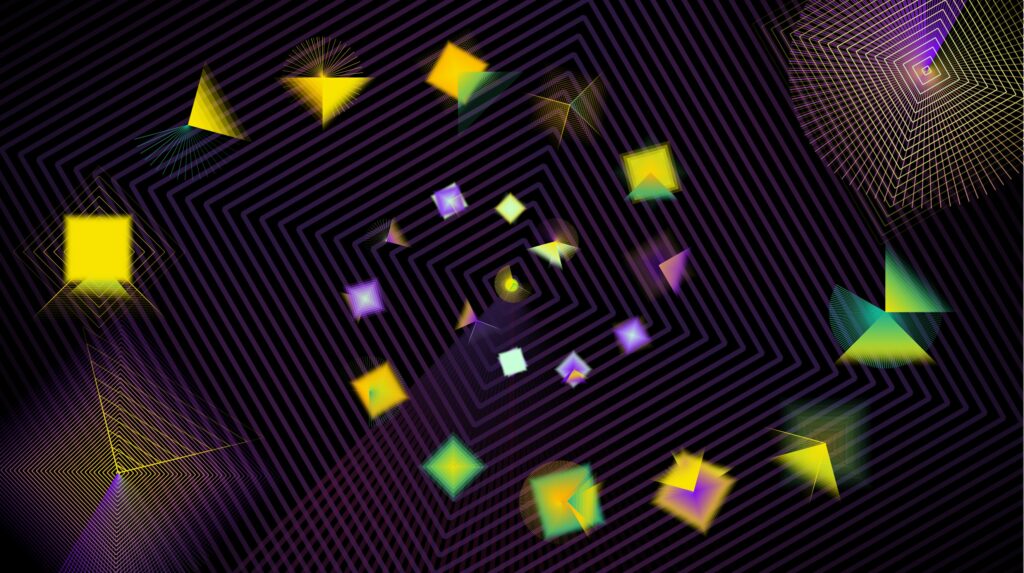 Synopsis
Synopsis
It’s 2024, or—time doesn’t actually matter so much—2529: an octopus as narrator, old dikes that once formed the contours of land. In an generative audio experience, a podcast that is not a podcast, Drift connects rising sea levels and the climate crisis to the rise of AI. This story world combines the imaginary with factual sources, such as the IPCC climate report and real-time weather forecasts by the Dutch meteorological institute. In a distant future, society has learned hard lessons from environmental neglect. Due to pollution and rising sea levels, the Netherlands, such as it once was, no longer exists. The waters have now been injected with AI. A techno-liquid environment serves as a living repository of knowledge, merging ancient wisdom with futuristic insights. The pace and rhythm of the story are synchronized with the lunar phases and the tides, moving away from the rigid mechanical clock that dictates human life, and back to the way Mother Earth intended. Technology and nature combine to create a new reality that the listener can drift through.
2. Future Botanica
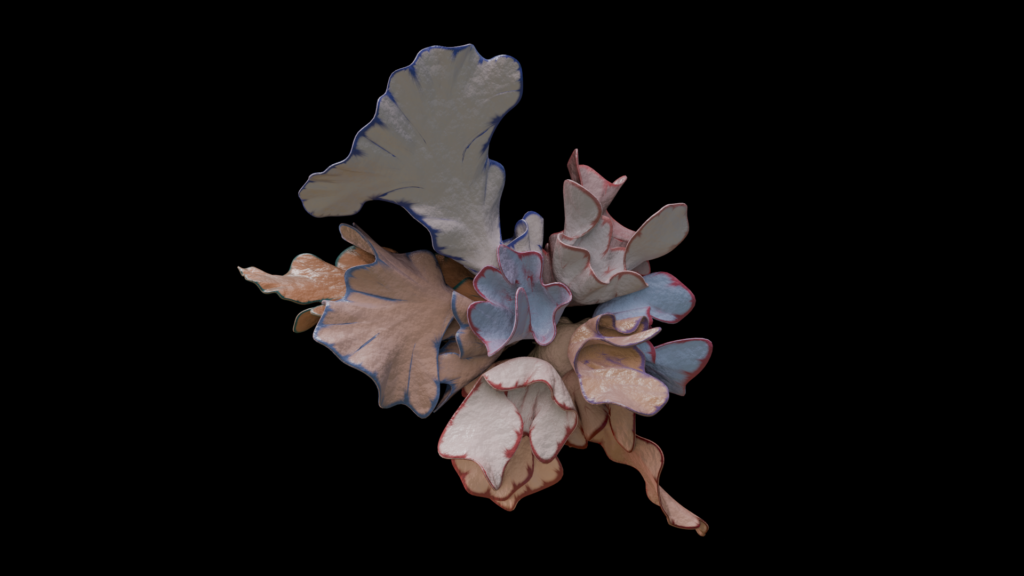 Synopsis
Synopsis
The idea that nature and technology are incompatible is outdated. Nature is full of cultivated elements introduced to serve the needs of human beings. The nature around us is subjected to -isms such as anthropocentrism, colonialism and capitalism. Add to this new technological systems such as AI and robotics, from which autonomous entities emerge that will probably also merge with nature, and an infinite number of possible future scenarios unfold. These speculations are the subject of the innovative augmented reality app Future Botanica. The app allows the user to design ecosystems with new nature using an AI. These virtual ecosystems are then planted in existing physical nature: you superimpose digital designs—one of the proposed scenarios or one you make yourself—on existing landscapes. By making your imaginings visible, you can safely explore ideas, expectations, fears and desires regarding the future of the natural environment. Winner of the Film Fund DocLab Interactive Grant 2024.
3. Me, a Depiction
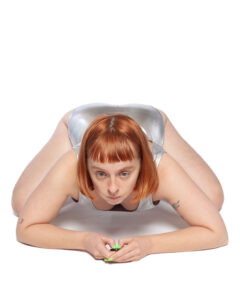 Synopsis
Synopsis
In an intimate space it can feel slightly uncomfortable, voyeuristic even, to watch Lisa Schamlé draped as a living part of her own performance/installation on a mirrored object. In the mirror, Schamlé looks not only at herself, but also back at you, seeking contact with her audience in order to involve it actively in the process taking place. In this third and final part of her trilogy on sexuality, Schamlé reclaims the autonomy of her body from where it has been lost: in the public domain, that abstract area where the female body is always exposed to the objectifying and normative gaze of the other. A gaze that has an absurd degree of power over the way women see themselves, and through which they often judge themselves, and each other, mercilessly. Schamlé strives to escape the suffocating dictate of an idealized body image. This raises the question whether in art the gaze can become inquiring rather than judgmental. Winner of the Film Fund DocLab Interactive Grant 2024.
4. Sincerely, Victor Pike
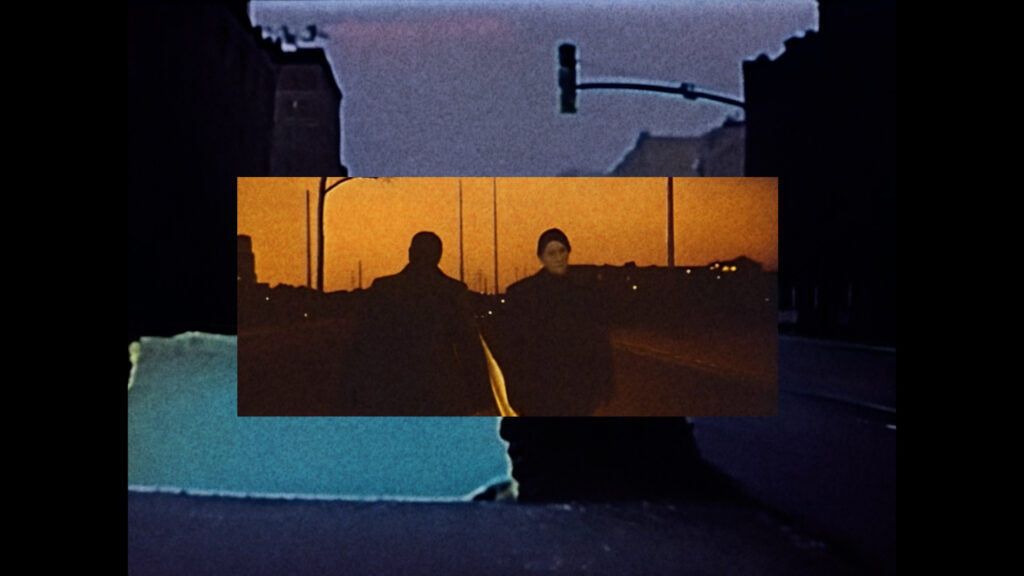 Synopsis
Synopsis
A poor memory leads Gregor Petrikovič to make audio recordings of conversations with loved ones, friends and acquaintances. Since 2016, he has been building an archive of anecdotes and recollections. With AI-generated visuals, Sincerely, Victor Pike, winner of the SOLO AI Award 2024, combines these faceless voices in a patchwork to produce a collective memory around the semi-fictional figure Victor Pike. The dreamlike, nostalgically grainy quality of the images raises questions about authenticity and the nature of memory. The images are clearly not real; the shapes and settings are recognizable, but full of anomalous and alienating detail. Cars fly through the air, bodies merge. At the same time, this may actually be true to the nature of memories, which lie on the boundary between the real and the surreal. This not only questions the relationship between technology and memory, but also challenges the notion of AI as an instrument detached from humans, precisely because it is used as a means to portray something as subjective as memories.
About IDFA DocLac
DocLab is an interdisciplinary platform for interactive and immersive documentary art. DocLab is seen as the most significant première platform for interactive documentaries internationally. IDFA DocLab pushes the boundaries of how we perceive and engage with non-fiction narratives by blending art, reality, and technologies. Founded in 2007, it fulfills a pioneering role in the turbulent development of digital storytelling, virtual reality, live performance, and artificial intelligence. Just as, more than a century ago, filmmakers discovered how they could use the language of film, DocLab now offers a platform to a new generation of makers through which they can invent their own languages and experiment with new forms of narrative and presentation.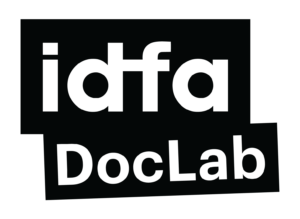
Exhibition & Playrooms @droog is one of the main locations of the DocLab program. Here you play, explore, and experience interactive documentary projects that use VR, AR, AI, games, new media, and performances. Entry is free, but you need to reserve online via idfa.nl/doclab to secure your spot. New this year are the DocLab Playrooms. That’s where makers and the audience meet each other to playtest new projects, formats, and technologies. Explore the full program of IDFA DocLab at idfa.nl/doclab.
About IDFA
The International Documentary Film Festival Amsterdam (IDFA) is once again bringing an exciting selection of the world’s best documentaries to Amsterdam this year, from November 14 until 24. Immerse yourself in new work from emerging talent and established filmmakers, with world premieres, festival favorites, and thematic programs.

